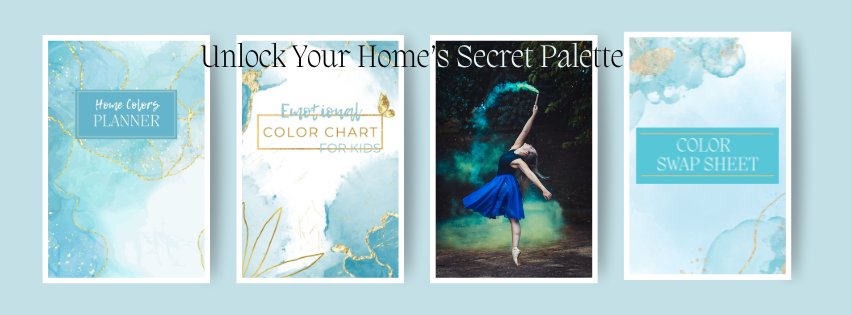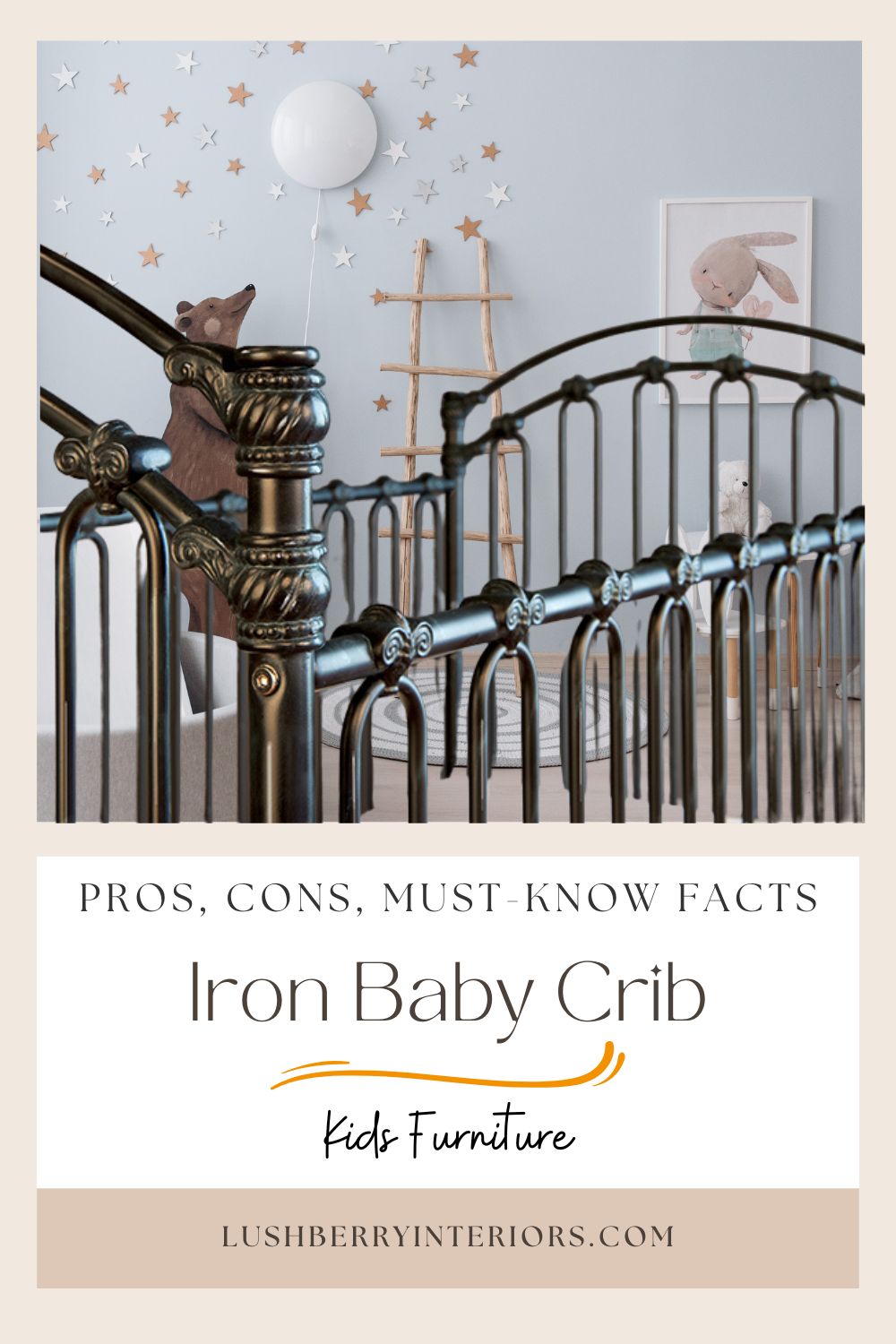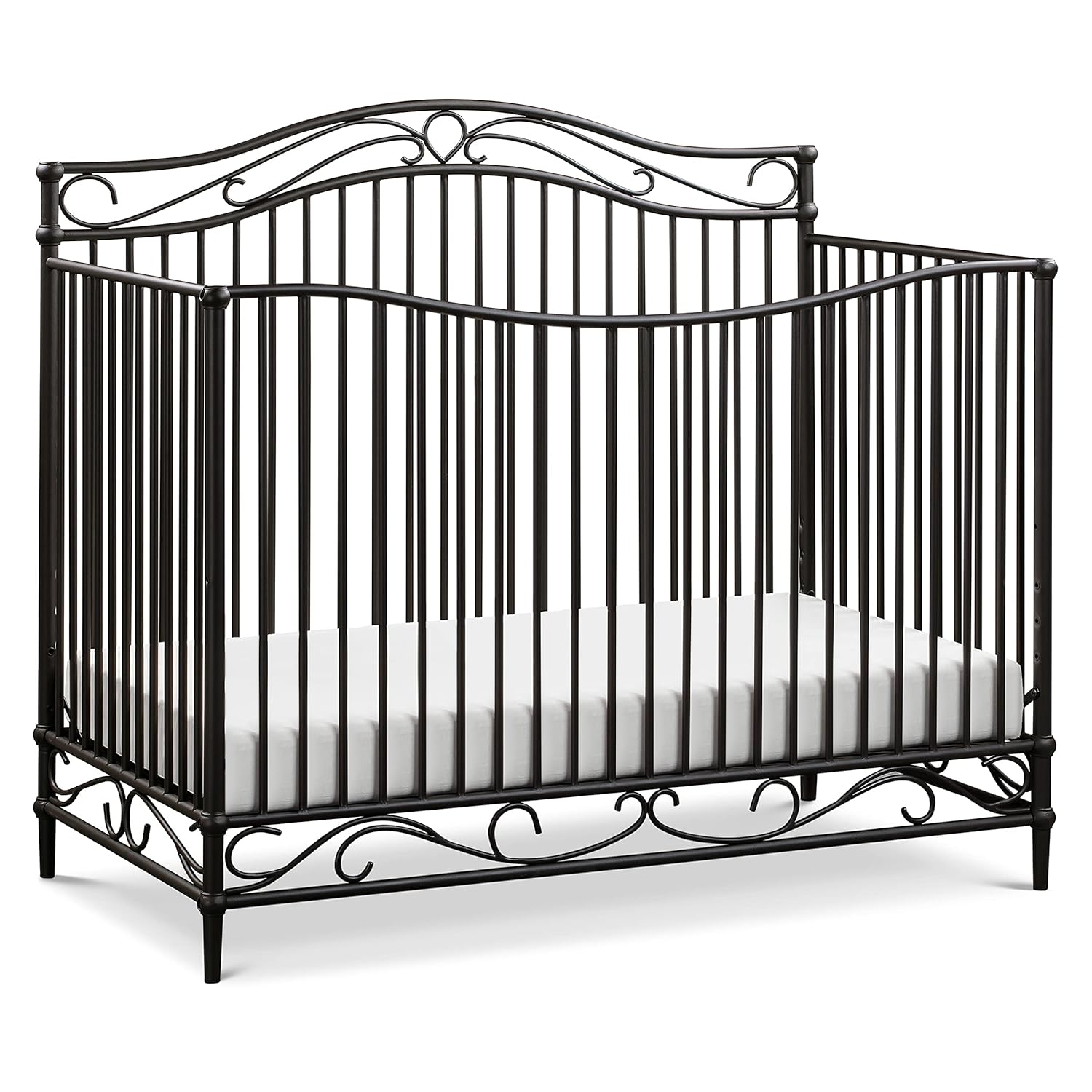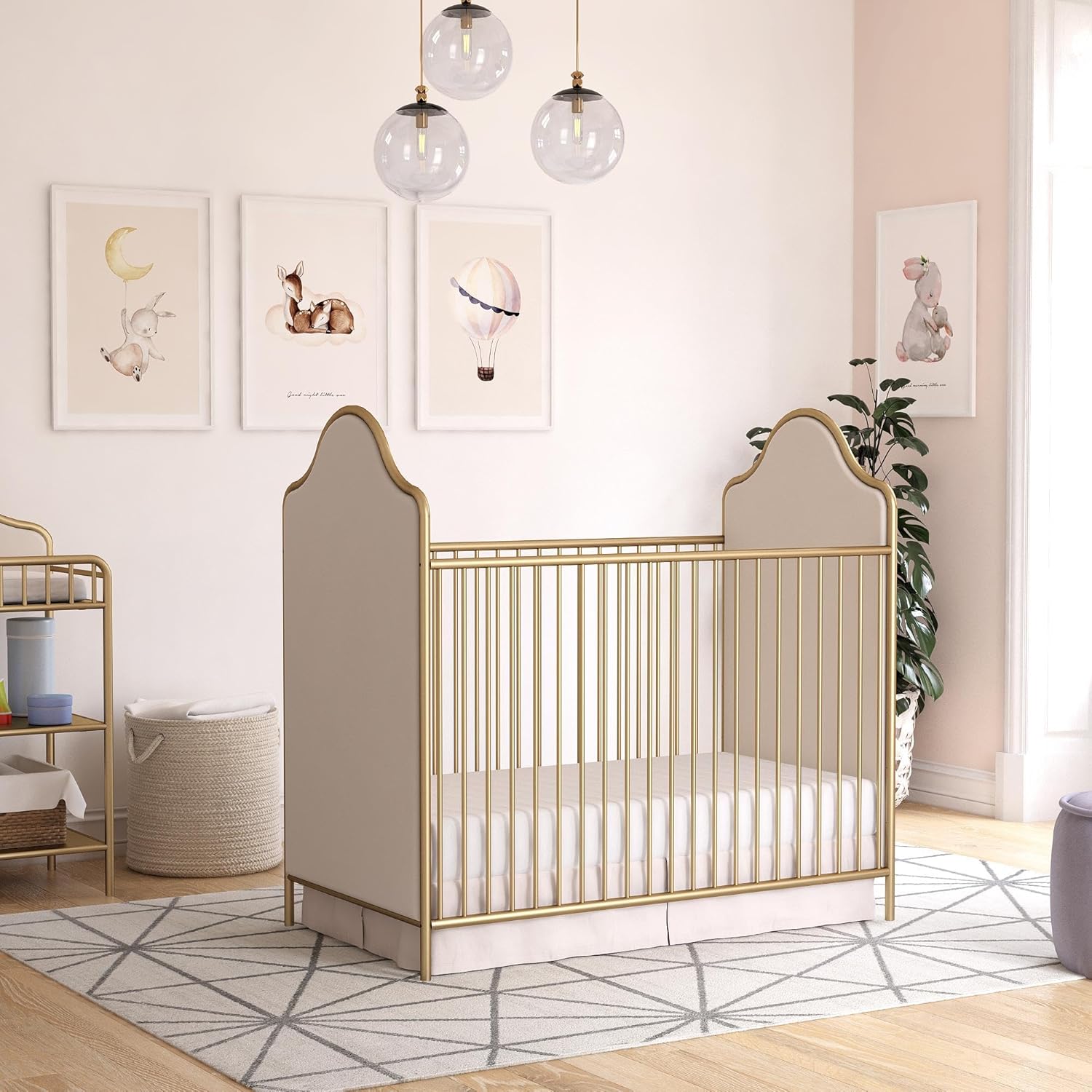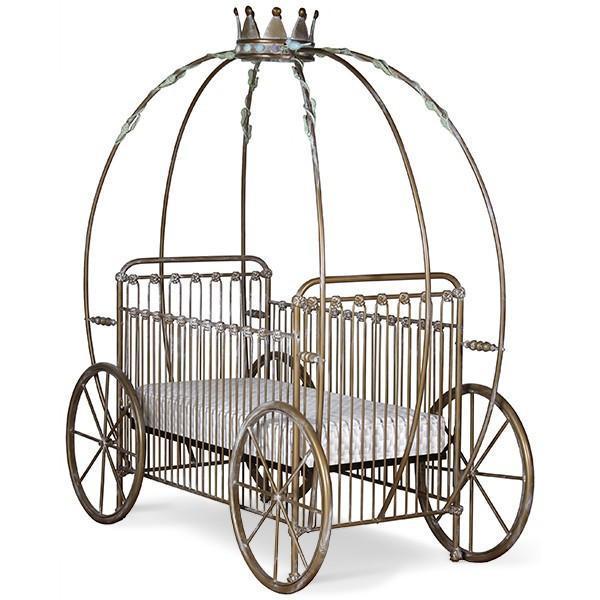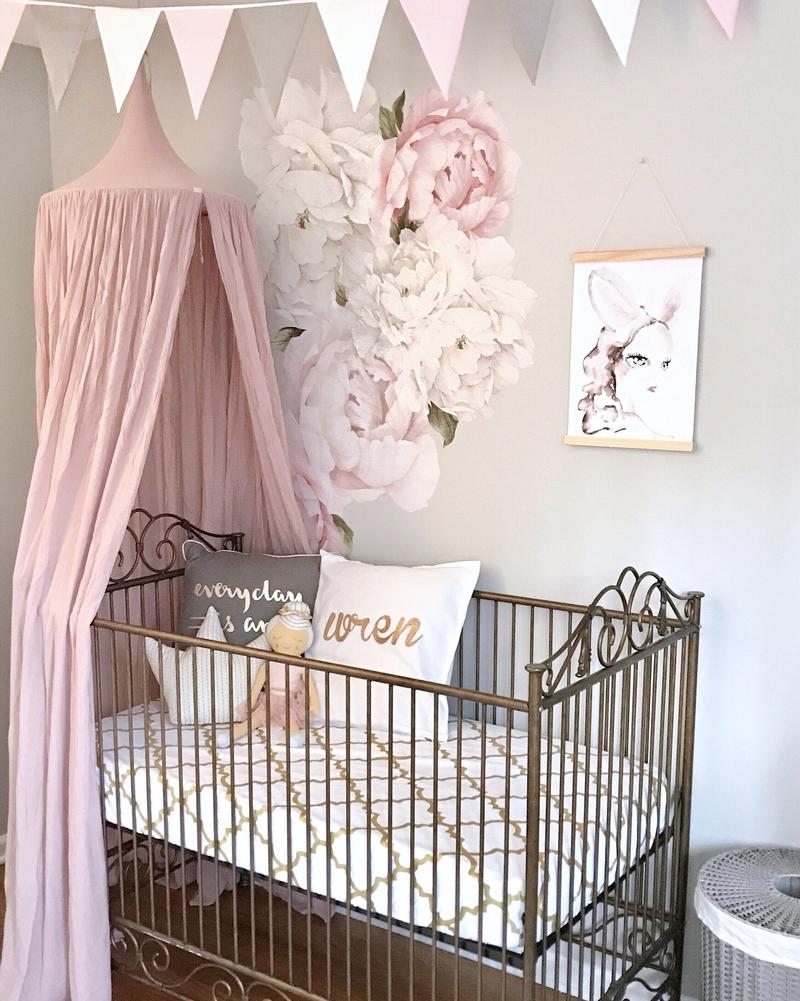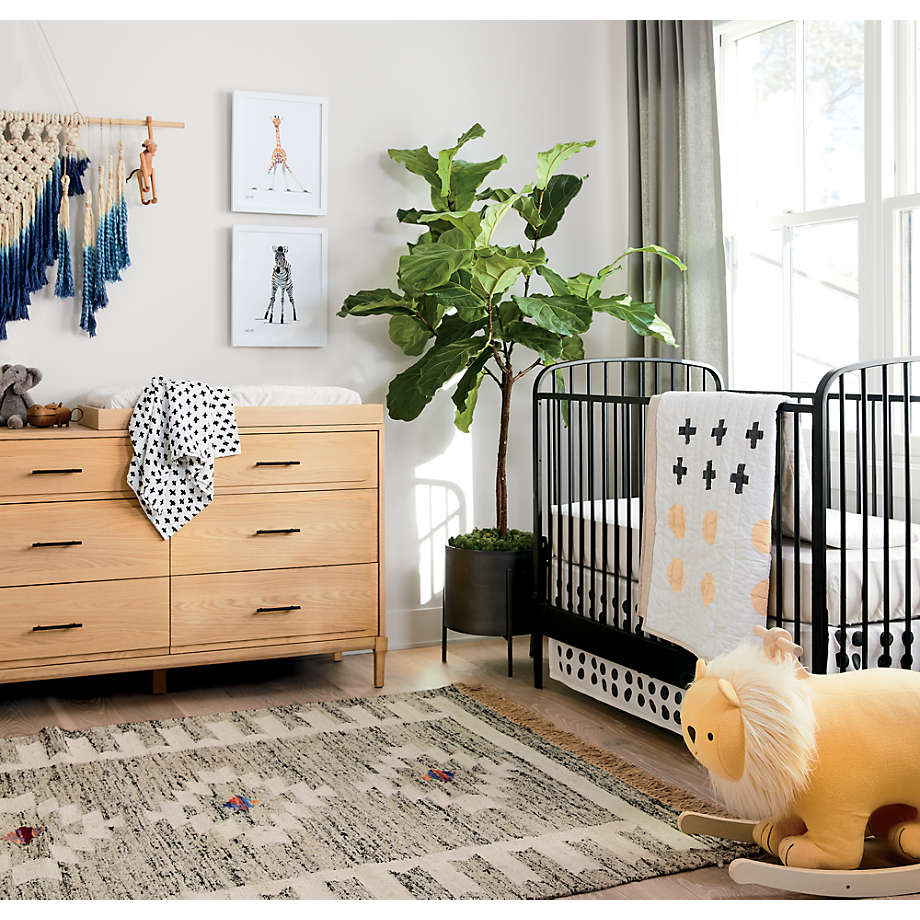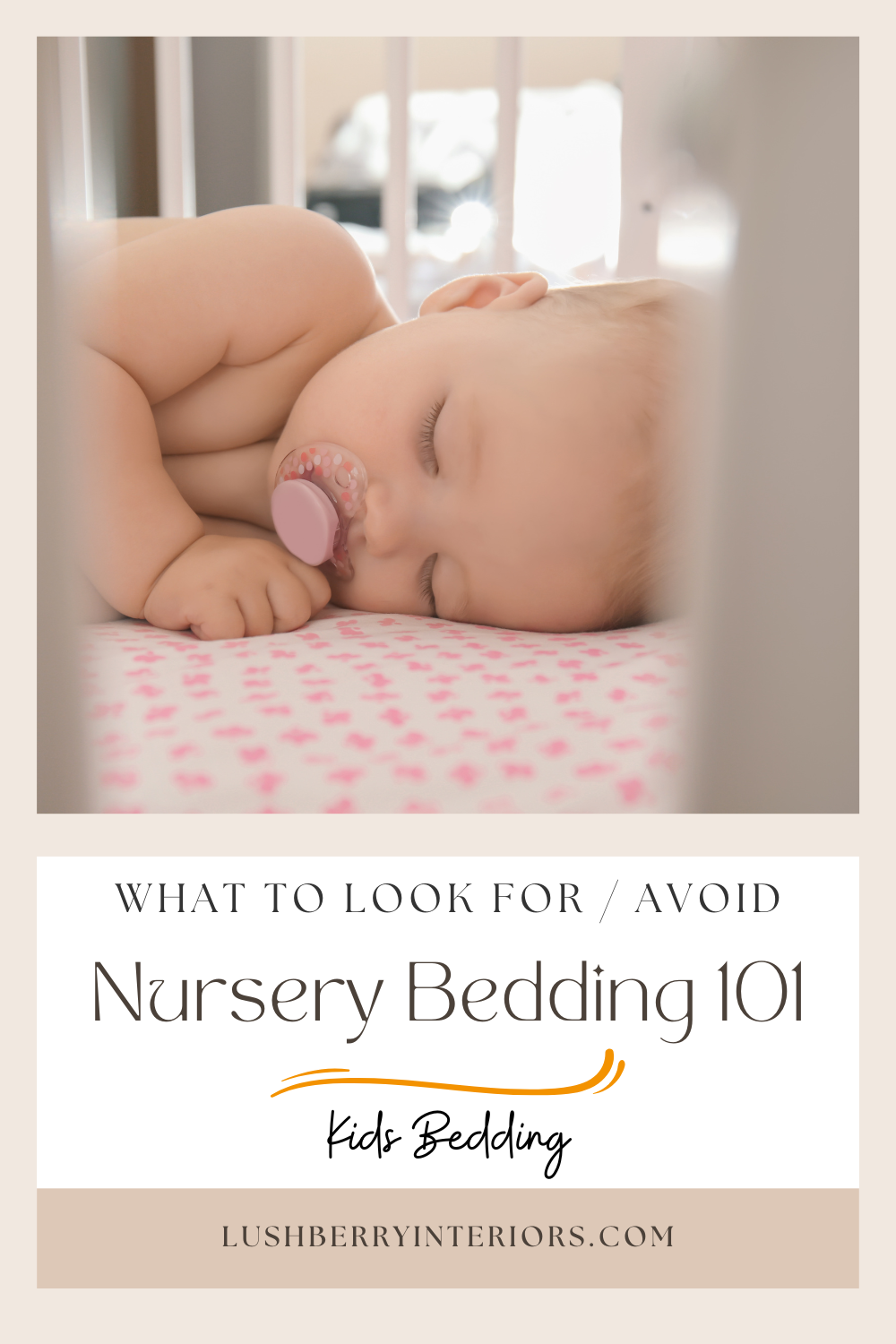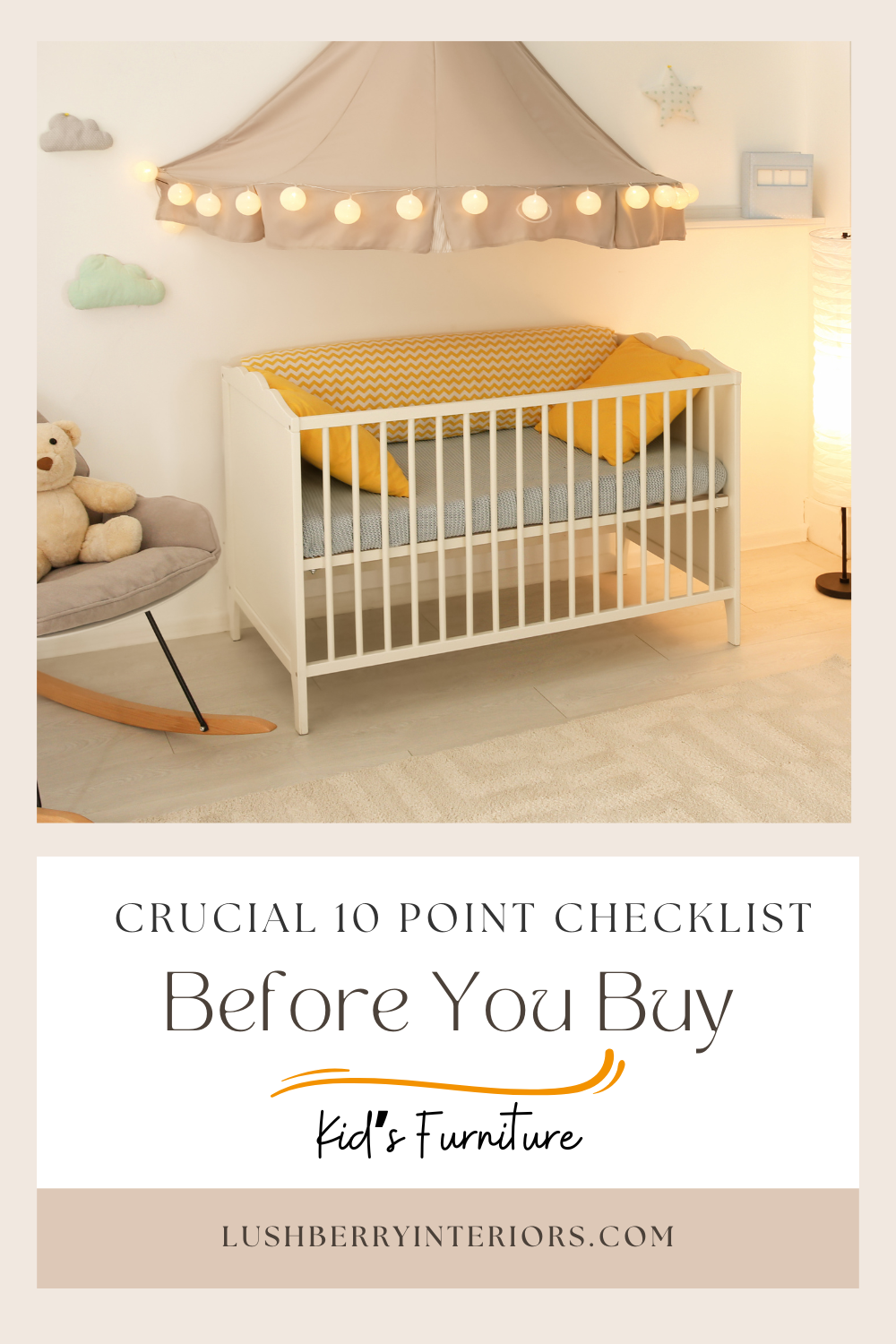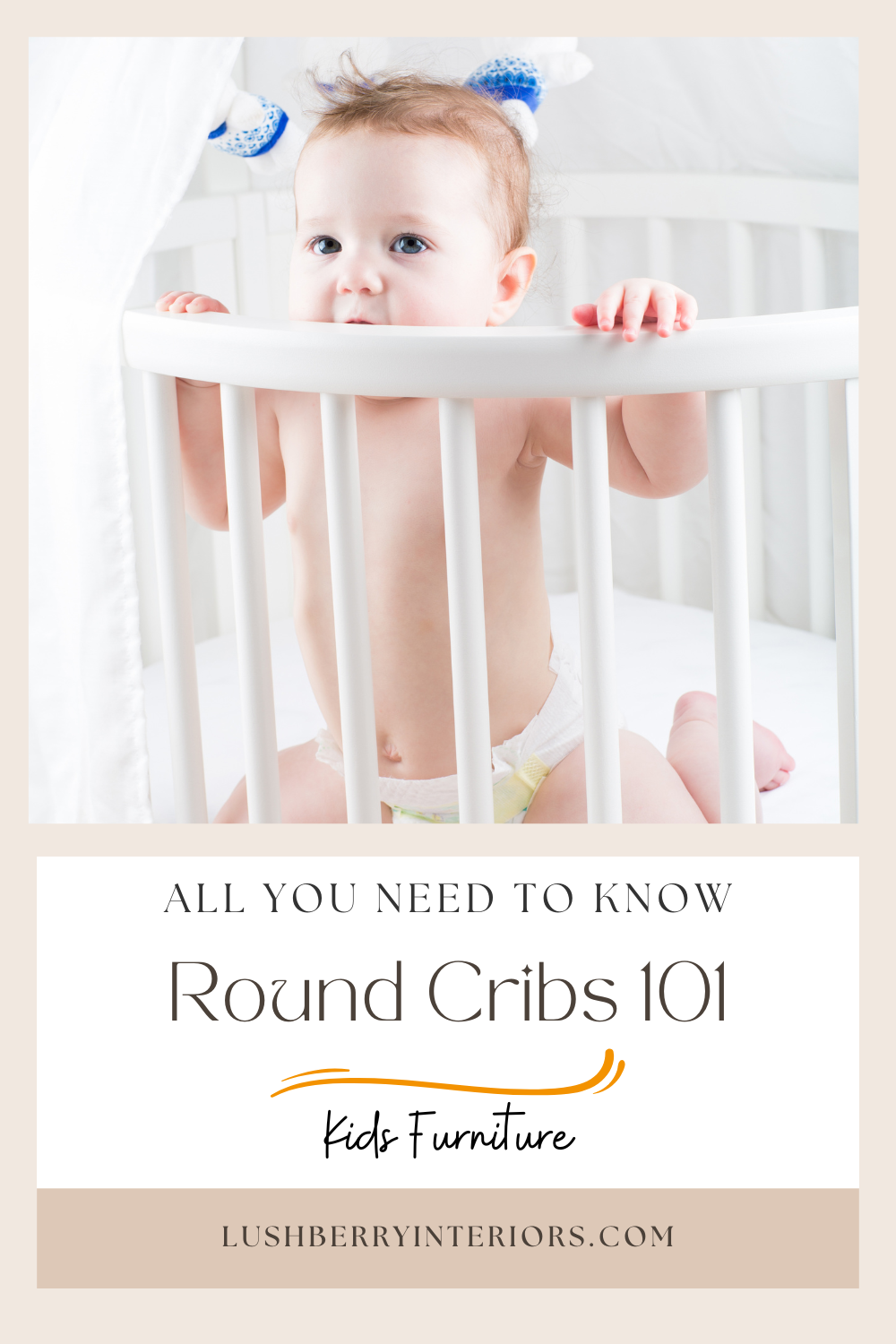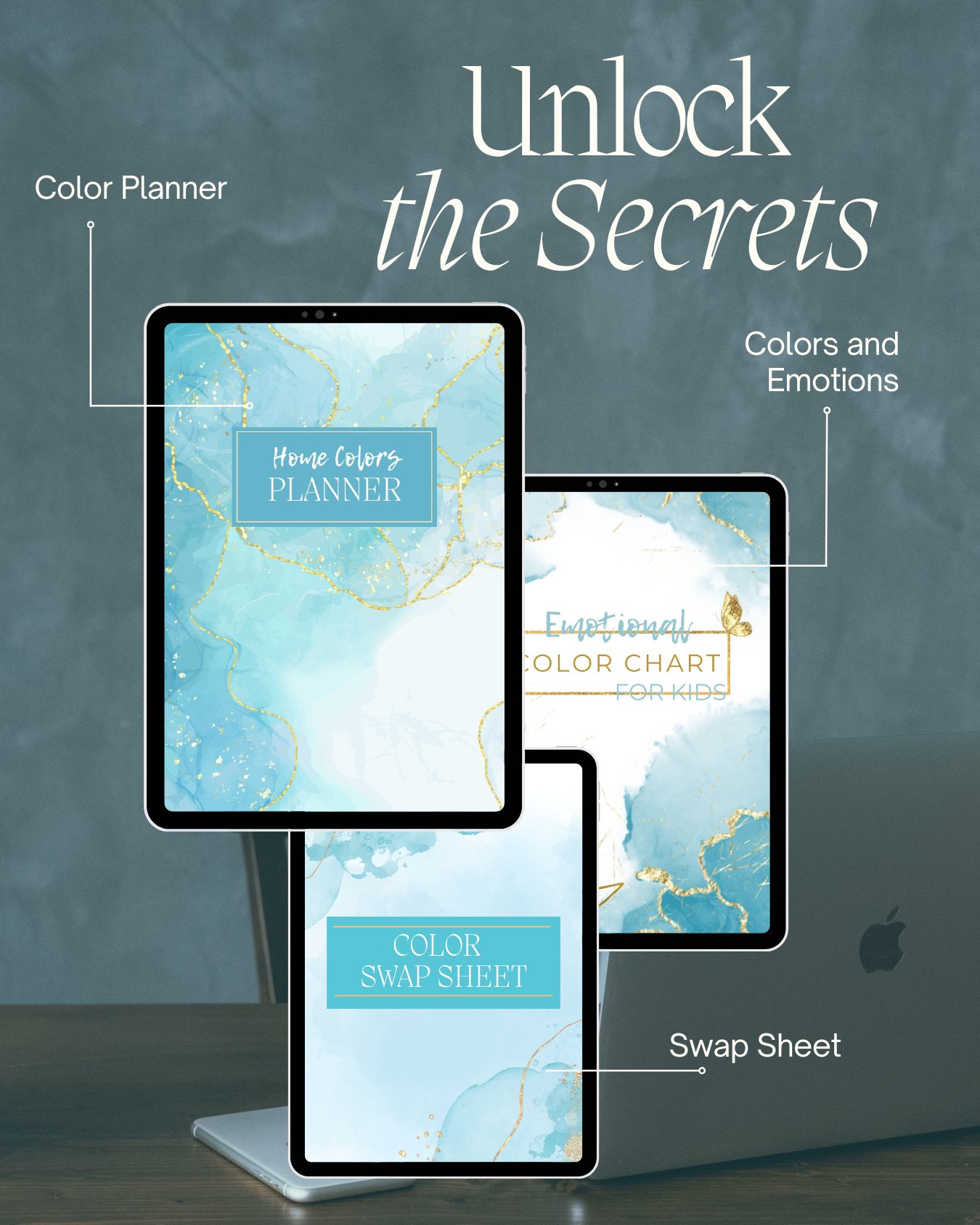5 Reasons to Love (and 4 Things to Consider) Before Buying an Iron Baby Crib
Is an iron baby crib the right choice for your nursery? The pros, cons, and must-know facts
(We have included third party products with the goal to help you navigate the web easily so you can focus on what matters to you. Purchases made through links on this page may earn us a commission.)
Choosing the right crib for your baby is the most important decision. With so many options on the market, each with unique features, materials, and aesthetics, it can be challenging to determine which crib best suits your needs.
Iron cribs, in particular, have been making a resurgence, prized for their timeless look and sturdy construction. However, as with any significant purchase, it’s essential to weigh the pros and cons carefully. Let's break down the key benefits and drawbacks of iron baby cribs. Don't forget to read my essential tips to help you make the best decision for your nursery.
Planning to buy baby cribs and furniture is a long drawn process. Read our page on Baby Cribs to better understand your options and make an informed decision.
What is an Iron Crib?
An iron baby crib is a crib crafted from wrought iron or steel, often powder-coated for durability and can come in many colors. The most poplar finishes are black, white, gold, or bronze. They can also be distressed to give them the look and feel of being passed through the generations.
They are celebrated for their vintage-inspired design, evoking a sense of nostalgia and adding an elegant touch to the nursery. Iron cribs are typically crafted to be durable, lasting through multiple stages of childhood and potentially even being passed down as an heirloom.
The Pros of Iron baby crib
1. Exceptional Durability
Iron cribs are known for their strength and resilience. Unlike wood cribs, which can show scratches or damage over time, iron cribs are much harder to dent or chip.
Wood can also warp and age - so it is susceptible to the climate around it. While iron cribs when forged at their joints, make them stronger and are not affected by climate.
This durability makes them an excellent investment for families who want a crib that can be used for multiple children or even passed down through generations. Additionally, since iron is a strong material, it can bear weight and withstand wear and tear exceptionally well.
2. Timeless and Elegant Design
One of the biggest attractions of iron cribs is their vintage aesthetic. You cannot deny the elegance and sophistication these cribs bring to the baby nursery instantly enhancing the decor.
Many iron crib designs feature elegant curves, intricate details, and timeless finishes. These cribs often suit a variety of nursery themes, from classic and traditional to modern and chic. An iron crib can act as a centerpiece in the nursery, adding a touch of sophistication and charm that complements various décor styles.
Tip: Usually all crib manufacturers follow the CPSC crib safety standards. However, as the end customer you must always check to see the certification by the Juvenile Products Manufacturers’ Association (JPMA) on the final product.
3. Easy Maintenance
Iron cribs are relatively low maintenance compared to some other crib materials.
They don’t require special cleaning products or delicate care routines. A simple wipe-down with a damp cloth and mild soap is usually sufficient to keep them looking fresh and clean.
Unlike wood, which may need polishing, or materials that can harbor bacteria, the smooth, non-porous surface of iron is easy to sanitize, making it a practical option for busy parents.
4. Hypoallergenic and non-Toxic options
With increasing emphasis on eco-friendly and chemical-free homes, many iron cribs are designed to be hypoallergenic and free from harmful chemicals,
This is crucial for parents concerned about creating a safe environment for their baby. The powder-coated finishes often used on iron cribs are typically lead-free and non-toxic, ensuring the crib doesn’t emit harmful chemicals into the air, a particularly important factor for indoor nursery spaces.
Paired with easy wipe downs with disinfecting wipes, the iron baby crib truly seems like a no-brainer.
5. Personalizing the crib
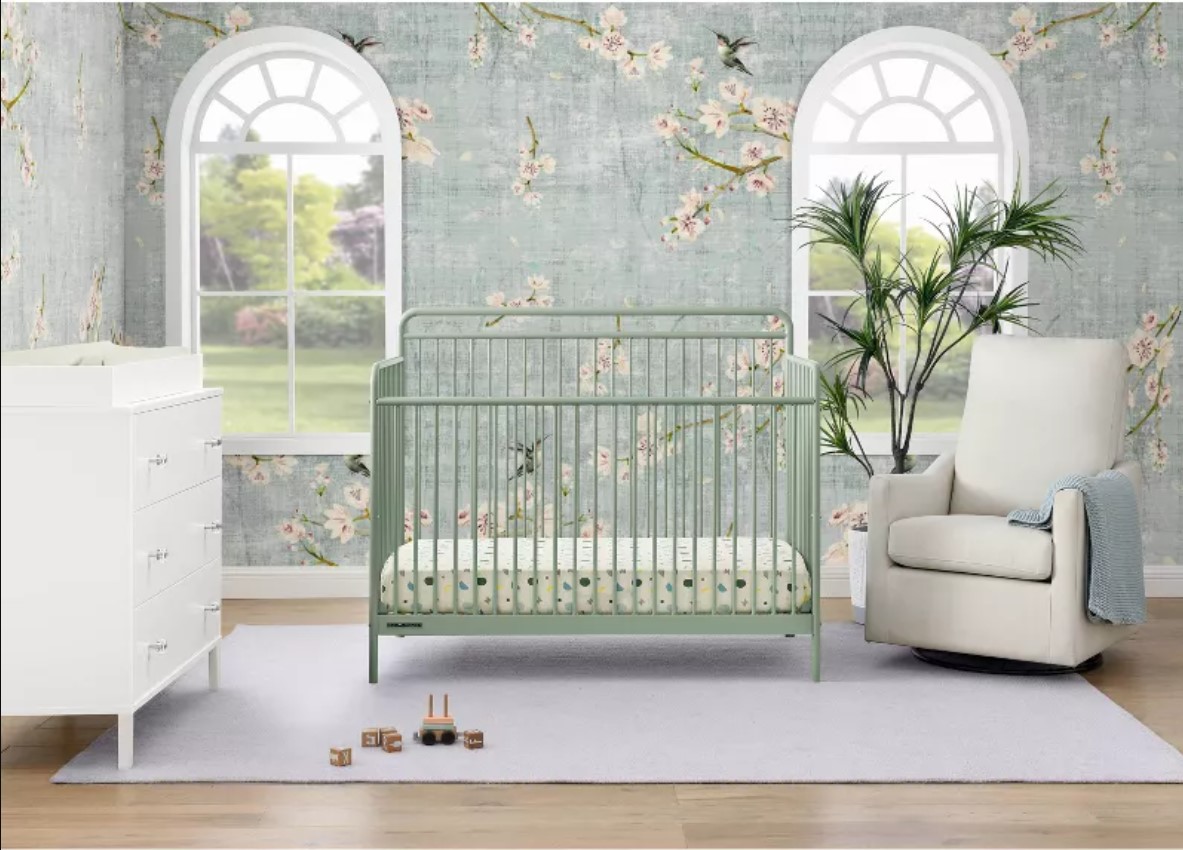 Delta Hayden Convertible Crib in Tea Green from Target
Delta Hayden Convertible Crib in Tea Green from TargetIron cribs are often available in a range of colors, from classic black and white to softer shades and metallics. They are also available in beautiful paint colors making it easy to find an option that complements your nursery’s color scheme.
This allows you to personalize your metal crib as per your chosen theme for the nursery. Since they follow the standard measurements, you can choose from the regular array of themed baby crib bedding.
The powder-coated finishes also tend to be resistant to fading, ensuring that the color remains vibrant and fresh over time.
The Cons of Iron Baby Cribs
1. They pack a heavy punch!
Iron cribs are considerably heavier than wooden cribs, which makes them harder to move. This weight can be an issue if you plan to rearrange the nursery often or if you’re trying to transport the crib up or down stairs.
Once placed, these cribs are generally difficult to shift, so they work best if you’re confident about where you want them positioned.
Having a sturdy piece of furniture in the nursery is not necessarily a bad idea, once it's been put in.
2. Cool as a cucumber?
As your baby starts to move their arms and legs, they like to grab everything. Iron crib rails will naturally feel cooler to the touch, which may be uncomfortable for them.
This isn’t a significant concern, especially in temperature-controlled rooms, but it’s worth noting if you live in a colder climate or keep your nursery on the cooler side.
3. Custom Made and High End
Iron cribs tend to be more expensive than their wooden counterparts due to their high-quality materials and unique craftsmanship. The additional durability and aesthetic appeal can make the higher price worth it, but budget-conscious families may find it challenging to justify the cost. For families on a tighter budget, this upfront investment might require planning but could ultimately save money in the long run if the crib is used for multiple children.
These luxury cribs also allow a high degree of customization. The very nature of the extensive selection and detailed work means that the crib you order will have to be made specifically for your baby.
As a result these metal cribs can be rather expensive in comparison to the standard cribs available in your local store. Also remember that custom made items are normally non-refundable.
4. Limited Convertible Styles
Most iron cribs come with a set design and limited options for height adjustment or conversions. Some models may allow conversion to toddler beds, but others do not, so you may need to purchase a separate toddler bed or bed frame as your child grows.
Must-Know Facts Before you Purchase an Iron baby Crib
Safety Standards
Safety is the top priority when selecting a crib. Ensure that the iron crib you choose complies with the latest safety standards, including the spacing between slats, the crib’s height, and the stability of the structure. Look for certifications or labels, such as those from the Consumer Product Safety Commission (CPSC) or the Juvenile Products Manufacturers Association (JPMA).
Quality Check
Check that the crib’s finish is free from sharp edges or rough areas that could harm your baby. Opt for powder-coated, non-toxic finishes that are chip-resistant and safe for babies who may touch or chew on the railings.
Assembly and Portability
Iron cribs are often heavy, so consider the ease of assembly and whether you’ll need additional help moving or setting it up. Some iron cribs are designed with caster wheels for easier mobility, which can be a helpful feature if you need to reposition the crib in the nursery.
Matching Nursery Style
Consider your overall nursery aesthetic and ensure that the iron crib aligns with it. Iron cribs tend to complement vintage, classic, or even industrial themes very well, but they might look out of place in ultra-modern or minimalistic spaces.
Additional Tips for Maintaining an Iron baby Crib
To keep your iron crib looking its best, clean it regularly using a soft, damp cloth. Avoid using harsh chemicals that could damage the finish or create residue that could be harmful to your baby. Additionally, if you live in a humid climate, you might want to occasionally check for any signs of rust, though high-quality iron cribs with powder coatings are usually resistant to rust.
So...Is an Iron Crib Right for You?
Choosing an iron crib comes down to balancing your aesthetic preferences, budget, and practical needs. An iron crib might be an excellent choice if:
- You love a timeless or vintage aesthetic.
- Durability and longevity are high priorities.
- You’re looking for a crib that can easily integrate into various nursery styles and potentially become a family heirloom.
On the other hand, if you need a lightweight, budget-friendly crib that offers customization, you might be better suited with a wooden or convertible crib option.
Iron baby cribs offer a blend of elegance, durability, and safety that can be difficult to match. They make a striking statement piece and, with the proper care, can last through multiple generations. For many families, an iron crib is more than just a functional piece of furniture—it’s a cherished addition that brings charm and a sense of history to the nursery.
As you make this important decision, remember to prioritize safety and choose a crib that meets your family’s needs. Whether you opt for an iron crib or another material, the right choice is one that ensures your baby’s comfort and security while also reflecting the love and care you’re pouring into creating a beautiful space for them to grow.
Now that you have decided on the iron baby crib that will frame your little bundle of joy, it's time to check out the nursery bedding.
Read On...

Hi, I am Richa and am super excited to see you here. I enjoy interior designing so much I went back to study it. Now armed with knowledge, passion and a vision to make 'happy homes', I hope this site will give you all the tools you need to make your kid's room happy too. Read More...
